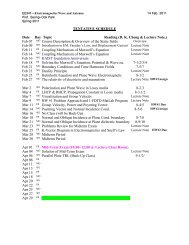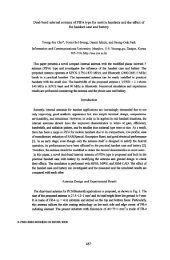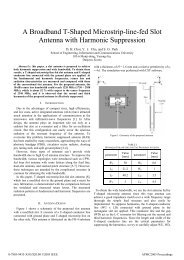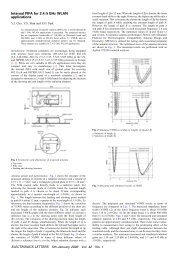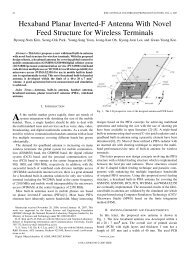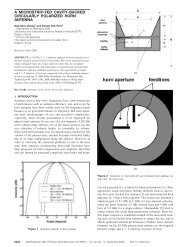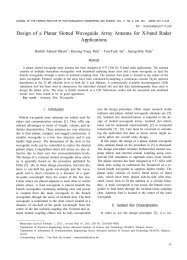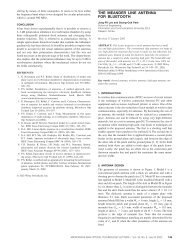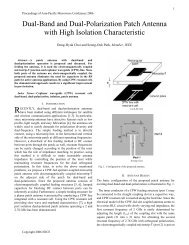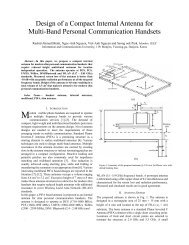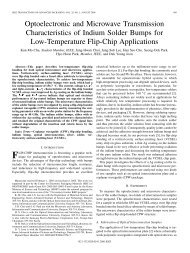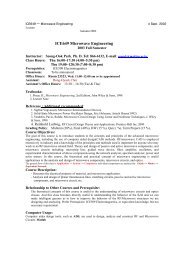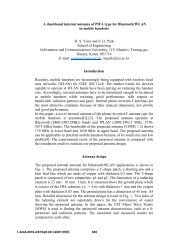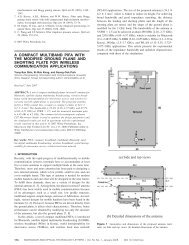A DDS and PLL-based X-band FMCW Radar System
A DDS and PLL-based X-band FMCW Radar System
A DDS and PLL-based X-band FMCW Radar System
Create successful ePaper yourself
Turn your PDF publications into a flip-book with our unique Google optimized e-Paper software.
40 MHz<br />
82.031250 ~<br />
83.203125 MHz<br />
C-b<strong>and</strong><br />
(5.25 ~ 5.325 GHz)<br />
Doubler<br />
X-b<strong>and</strong><br />
(10.50 ~ 10.65 GHz)<br />
BPF<br />
Divider<br />
Amp<br />
TX<br />
Antenna<br />
LPF-Q<br />
LNA<br />
RX<br />
Antenna<br />
LPF-I<br />
Mixer<br />
(a)<br />
Figure 1. The block diagram of the X-b<strong>and</strong> <strong>FMCW</strong> radar<br />
(a)<br />
Figure 2. Baseb<strong>and</strong> <strong>DDS</strong> (AD9954) <strong>and</strong> X-bamd <strong>PLL</strong> system<br />
(b)<br />
(b)<br />
Figure 4. The measured in-phase <strong>and</strong> quadrature signals (a) I (b) Q<br />
REFERENCES<br />
[1] Merrill I. Skolnik, Introduction to <strong>Radar</strong> systems 3rd, McGRAW-HILL,<br />
2001.<br />
[2] Andreas Stelzer, “Resoultion Enhancement with Model-<strong>based</strong><br />
Frequency Estimation Algorithms in <strong>Radar</strong> Signal Processing,”<br />
Subsurface Sensing Technologies <strong>and</strong> Applications, Vol. 4, No. 3, pp<br />
241-261, July 2003.<br />
Figure 3. The spectrum of the <strong>DDS</strong> output (AD9954)<br />
IV.<br />
CONCLUSION<br />
A <strong>DDS</strong> <strong>and</strong> <strong>PLL</strong>-<strong>based</strong> <strong>FMCW</strong> radar is designed <strong>and</strong><br />
experimentally tested. The <strong>DDS</strong> is suitable for linear frequency<br />
modulation, <strong>and</strong> it is easily controlled by programming binary<br />
code. A VCO in <strong>PLL</strong> is useful to cover wide b<strong>and</strong> operation.<br />
Thus, the combination of a <strong>DDS</strong> <strong>and</strong> a <strong>PLL</strong> is good for wide<br />
b<strong>and</strong> linear modulation. The signal processing techniques to<br />
enhance the range resolution are zero-padding <strong>and</strong> spectral<br />
centroid processing. Its advantages are simple, fast, <strong>and</strong><br />
accurate. The enhanced range resolution is less than 0.25m.



